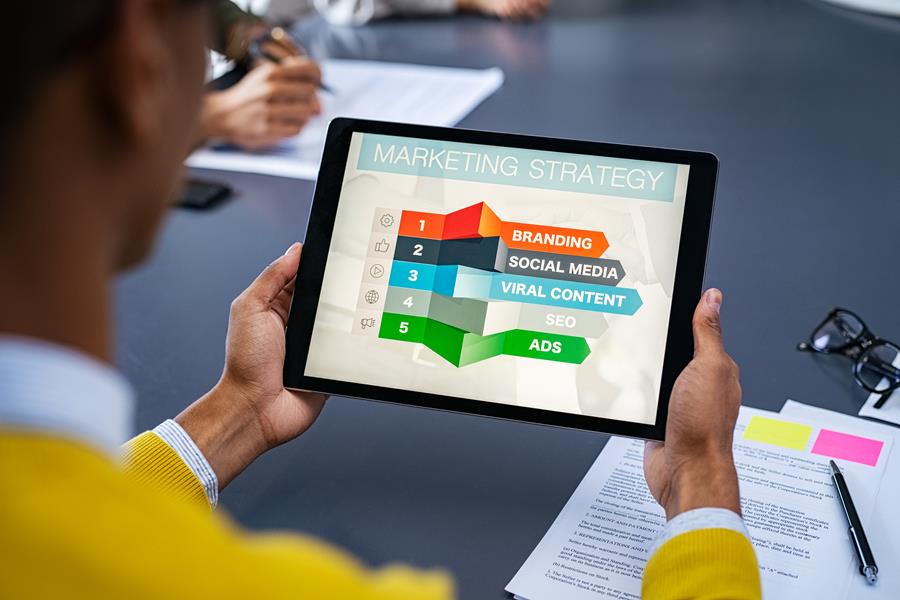9 Digital Marketing Strategies for Small Business Owners
In today’s digital age, internet marketing services with digital marketing are very crucial for the success of any small business.
This is so because the majority of consumers use the internet to research and purchase products and services.
Therefore, you must utilize web marketing and digital branding to connect with your target audience and drive sales.
However, with so many different channels and tactics available, it can be challenging for small business owners to know where to start.
In this blog post, we will discuss some best practices for small business owners to consider when developing their digital marketing strategy.
By following these tips, you can optimize your digital marketing efforts and grow your businesses in today’s competitive market.
Related: How to Start an E-Commerce Business: A Step-by-Step Guide
What is Digital Marketing?
Digital marketing refers to the use of digital channels, such as search engines, social media platforms, email, websites, and mobile applications, to promote products, services, or brands.
Unlike traditional marketing, digital marketing gives you the benefit of measuring and tracking the effectiveness of your digital campaign in real-time, allowing you to make data-driven decisions and adjust your tactics accordingly.
In addition, it involves a range of techniques and strategies that aim to reach and engage with target audiences through various digital platforms and devices.
Therefore, you can use these techniques individually or in combination to create an integrated digital marketing strategy to maximize the reach and impact of your brand’s message.
Curious about what these strategies are? Read on to find out!
9 Digital Marketing Strategies for Small Business Owners
1. Define Your Target Audience

The first step in any successful digital marketing campaign is to define your target audience.
This is advised because knowing who your ideal customer is will help you create more effective messaging, choose the right channels to reach them, and create content that resonates with them.
However, to define your target audience, you’ll need to do some research for your online marketing strategy.
Some key factors to consider include:
- Demographics: Age, gender, location, income, education level, etc.
- Psychographics: Interests, values, hobbies, lifestyle, personality, etc.
- Pain points: What challenges or problems does your target audience face that your product or service can help solve?
- Buying habits: How does your target audience typically research and purchase products or services like yours?
Once you have a clear understanding of your target audience, you can use this information to inform your digital marketing strategy and create more targeted and effective campaigns.
2. Develop a Strong Brand Identity

Your brand identity is what sets you apart from your competitors and helps customers identify and remember you.
So to develop a strong brand identity, you’ll need to define your brand values, voice, and personality.
This will help you create a consistent look and feel across all of your marketing channels, from your website to your social media profiles.
Your brand identity should be reflected in all aspects of your digital marketing, including:
- Logo and visual colour: Choose a logo and colour scheme that reflects your brand personality and values.
- Website design: Your website should have a cohesive design that reflects your brand and makes it easy for visitors to navigate.
- Content: All of your content, from blog posts to social media updates, should be written in a consistent voice that reflects your brand personality.
- Tone: Whether you’re creating marketing copy or responding to customer inquiries, your tone should be consistent and reflect your brand values.
By developing a strong brand identity, you can create a more memorable and recognizable brand that resonates with your target audience.
Read: Essential Tips for Improving your Web Design
3. Create a Mobile-Optimized Website

One thing you should consider in internet marketing is that more consumers are using their mobile devices to browse the internet and make purchases.
That’s why it’s essential to have a mobile-optimized website that’s easy to navigate and loads quickly.
According to a recent study by Google, 61% of users are unlikely to return to a mobile site they had trouble accessing and would visit a competitor’s site instead.
Therefore, here are some best practices to keep in mind when optimizing your website for mobile:
- Make sure your website is responsive: A responsive website automatically adjusts to fit the screen size of the device it’s being viewed on, whether it’s a desktop, tablet, or smartphone.
- Keep your design simple: Use a simple and clean design that’s easy to read and navigate on a small screen.
- Use large, easy-to-click buttons: Make it easy for visitors to navigate your site by using large, easy-to-click buttons and links.
- Optimize images and videos: Large images and videos can slow down your site’s load time, so be sure to optimize them for mobile.
By creating a mobile-optimized website, you can ensure that your visitors have a positive user experience, no matter what device they’re using to access your site.
4. Utilize Search Engine Optimization (SEO)

Search engine optimization in digital marketing is the process of optimizing your website to rank higher in search engine results pages (SERPs).
By utilizing SEO best practices, you can increase your website’s visibility and drive more traffic to your site.
Some SEO best practices include:
- Conducting keyword research and using relevant keywords throughout your website
- Creating high-quality, engaging content that answers your audience’s questions and addresses their pain points
- Optimizing your website’s meta tags and descriptions
- Building high-quality backlinks to your site
On that note, SEO digital marketing technique is an essential strategy that your business must adopt to be visible on the web.
Read Also: 5 SEO Tips to Boost your Business
5. Leverage Social Media Platforms

Social media platforms are also an excellent way for small business owners to connect with their target audience and build brand awareness.
This is true because social media platforms provide an opportunity to reach a large audience at a low cost, with billions of active users worldwide.
Some best practices for leveraging social media platforms include:
- Choose the Right Platforms: Identify which social media platforms your target audience is using and focus your efforts on those platforms. Popular platforms include Facebook, Instagram, Twitter, LinkedIn, and Pinterest.
- Be Consistent: Post regularly and consistently on your social media channels. This will help you build a following and keep your audience engaged.
- Engage with Your Followers: Respond to comments and messages on your social media channels promptly. This will help you build a relationship with your audience and demonstrate that you value their input.
- Use Visual Content: Use high-quality images and videos to capture your audience’s attention and make your posts more engaging.
6. Leverage Email Marketing

Email marketing is an effective way to stay on top of mind with your target audience and promote your products or services.
This is so because you don’t want to have a customer visit your site or interact with your post and not follow them up.
Therefore, some best practices for email marketing include:
- Building an email list of people who have opted-in to receive emails from your business
- Creating engaging and informative content that provides value to your subscribers
- Personalizing your emails to make them more relevant to your subscribers
- Analyzing your email metrics to optimize your email campaigns
7. Use Video Marketing

Video marketing is becoming increasingly popular, and it is an effective way to showcase your products or services and connect with your target audience.
Some best practices for video marketing include:
- Creating high-quality videos that are engaging and informative
- Keeping your videos short and to the point
- Including a call to action at the end of your videos
- Promoting your videos on social media and other channels
8. Utilize Paid Advertising

Digital advertising with paid ads, can be an effective way to reach a larger audience and drive more traffic to your website.
Examples of paid advertising include:
- Pay-per-click (PPC) advertising
- Social media advertising
- Display advertising
- Retargeting advertising
However, it is essential to choose the right type of paid advertising for your business that resonates with your target audience.
9. Analyze Your Results

Analyzing the results of your digital marketing efforts is crucial to determining what works and what doesn’t.
It allows you to make data-driven decisions that can help you optimize your marketing campaigns and improve your overall return on investment (ROI).
Here are some steps you can take to analyze your digital marketing results:
- Set goals
Before you start analyzing your results, you need to establish clear goals that you want to achieve. These goals could include increasing website traffic, generating more leads, or improving conversion rates.
- Identify key metrics
Once you have your goals in place, you need to identify the key metrics that you’ll use to measure your success. These could include website traffic, bounce rate, click-through rate, conversion rate, and revenue generated.
- Use analytics tools
There are several analytics tools available that can help you track and analyze your digital marketing results. Google Analytics is one of the most popular tools and can provide you with a wealth of information about your website’s performance.
- Analyze your data
Once you have your data, it’s time to analyze it to gain insights into your marketing campaigns. Look for patterns and trends that can help you identify areas where you need to improve.
- Make adjustments
Based on your analysis, make adjustments to your marketing campaigns to optimize your results. For example, if you notice that your conversion rate is low, you may need to improve your website’s user experience or adjust your messaging to better appeal to your target audience.
Bottom Line
Digital marketing can be a powerful tool for small business owners to increase brand awareness, attract new customers, and drive sales.
However, it’s important to approach it with a clear strategy, including identifying your target audience, selecting the appropriate channels, and creating valuable content.
Also, analyzing and adjusting your approach based on data and feedback can help you optimize your efforts and achieve your business goals.
This is why you should require digital marketing services from a digital marketing company to help in making your business visible enough to capture real-time data in today’s competitive market.
At Spread Solutions, we are a team of experts in providing solutions for digital transformation and digital branding, utilizing SEO and other best practices of digital marketing.
Contact us today to take your business to greater heights!

Leave a comment: